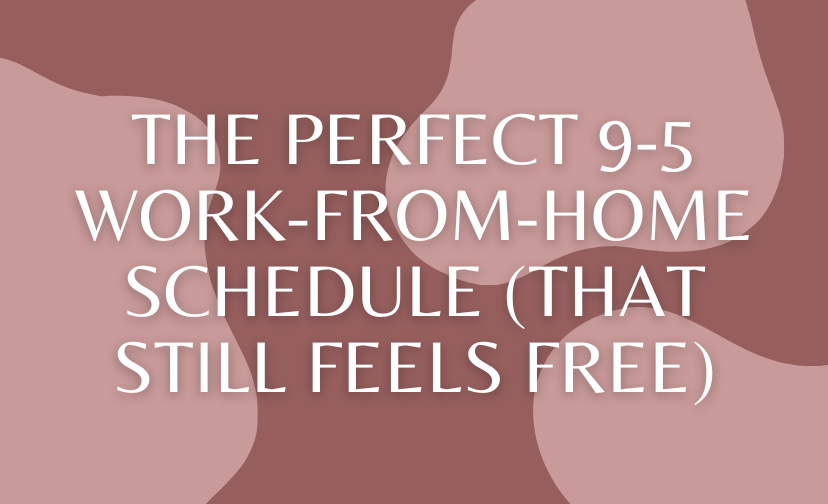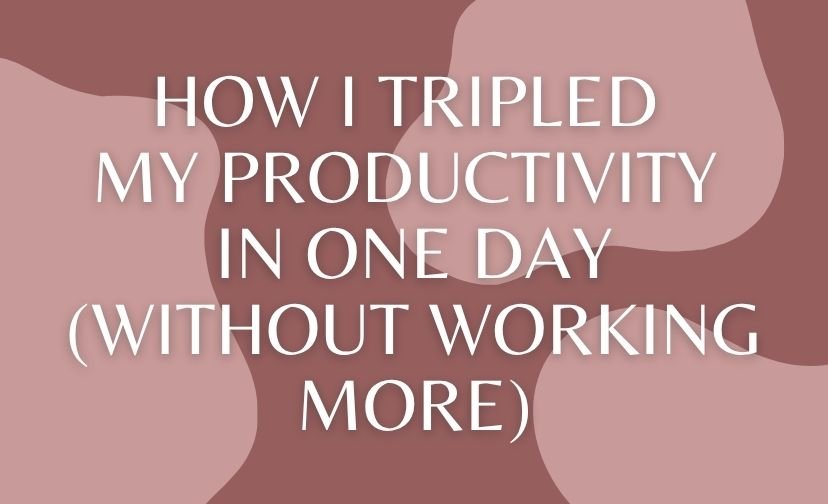Have you ever juggled multiple tasks simultaneously to end the day feeling like you’ve accomplished nothing? It’s a common scenario, and it’s not just you. The allure of multitasking productivity is as enticing as a siren’s song, promising efficiency and mastery over time.
But beneath the surface lies a stark reality—multitasking is more likely to sink your productivity ship than to sail it smoothly. As we navigate this blog post, you’ll discover why multitasking might be your productivity’s worst enemy and learn actionable strategies to reclaim your focus and time.
The Myth of Multitasking Productivity
The notion that multitasking can enhance productivity is a widespread misconception, deeply rooted in our fast-paced culture. At first glance, the idea seems appealing: Tackling several tasks simultaneously should theoretically save time and increase output.
However, research paints a different picture. Studies have shown that the human brain is not wired to handle multiple high-level tasks simultaneously. Instead, we often perceive multitasking as merely the brain switching rapidly between tasks, leading to reduced efficiency and increased errors.
Understanding Multitasking: What It Means
Multitasking, in essence, is the attempt to perform more than one task at the same time. But what does this entail? Picture a juggler with too many balls in the air; inevitably, some will fall. Our brains are not unlike this juggler.
When we try to divide our attention across various activities, each task receives only a fraction of our cognitive resources. This division hampers our ability to process information thoroughly, often resulting in superficial engagement and subpar outcomes.
Acknowledge that true multitasking is a myth. Focus on completing one task before moving to the next to enhance quality and efficiency. You may find that tasks are completed faster and with better results when approached individually rather than simultaneously.

The Science Behind Multitasking and Productivity
The science of multitasking productivity is a fascinating yet sobering field. Neuroscientific studies reveal that frequent task-switching increases the cognitive load on our brains, which can lead to mental fatigue and stress.
This constant toggling between tasks activates the prefrontal cortex, the brain’s hub for complex decision-making and problem-solving. However, this activation is not as beneficial as it sounds. Instead, it results in slower processing times and a greater likelihood of mistakes.
Research from Stanford University indicates that heavy multitaskers perform worse in tasks requiring focus and memory than those focusing on one task at a time.
The Negative Impacts of Multitasking
While multitasking might seem like a skill worth mastering, its negative impacts can ripple throughout your professional and personal life. The cost of divided attention is steep, often manifesting in missed details, forgotten tasks, and a pervasive sense of being overwhelmed.
Recognizing these impacts is crucial to understanding why single-tasking might be a more effective approach to enhancing productivity.
Cognitive Overload: Why Your Brain Can’t Keep Up
When we overload our cognitive capacity, our brain struggles to keep up with multitasking demands. Imagine filling a small cup with a firehose—the overflow is inevitable. Similarly, cognitive overload occurs when we push our mental limits, leading to increased stress and decreased performance.
As the brain becomes inundated with information, it prioritizes less effectively, making distinguishing between urgent and trivial tasks challenging. This can result in burnout, where even simple tasks become daunting and unmanageable.
Be mindful of your mental limits. Regular breaks and time away from screens can help reset your focus. Try techniques like the 20-20-20 rule: Every 20 minutes, look at something 20 feet away for 20 seconds to reduce eye strain and mental fatigue.

The Ripple Effect: How Multitasking Affects Your Work and Life
Beyond the confines of the workplace, the negative impacts of multitasking can seep into your personal life, affecting relationships and well-being. Constantly dividing your attention can make it challenging to be present in conversations, potentially leading to misunderstandings and strained interactions.
Moreover, the stress of unfinished tasks can bleed into personal time, eroding the boundaries between work and leisure. This lack of separation can diminish the quality, leaving you feeling perpetually behind and dissatisfied.
Recognizing the Signs of Multitasking Burnout
Burnout from multitasking is a silent thief of productivity, often going unnoticed until it has taken a significant toll. Recognizing the signs early can help you take corrective action before reaching a breaking point. These signs can include chronic exhaustion, decreased accomplishment satisfaction, and a pervasive sense of being overwhelmed.
Feeling Overwhelmed: Are You Juggling Too Much?
One of the most telling signs of multitasking burnout is the overwhelming feeling of juggling too many responsibilities. This sensation can manifest as anxiety or a constant state of urgency, where every task feels critical and time-sensitive.
As you try to manage multiple tasks, the quality of your work may suffer, leading to a cycle of stress and self-doubt. It’s essential to step back and evaluate whether you’re spreading yourself too thin, as this can compromise your productivity and well-being.
If you frequently feel overwhelmed, consider using a journal to track your tasks and emotions. Reflecting on what triggers stress can help you identify patterns and adjust your workload.

Mistakes and Missteps: Common Pitfalls of Multitasking
Mistakes and missteps are inevitable companions of multitasking. When attention is fragmented, errors are more likely to occur, whether sending an email to the wrong recipient or overlooking critical details in a report.
These blunders can have cascading effects, creating additional work and stress. Recognizing that mistakes are a natural consequence of multitasking can be a powerful motivator to embrace more focused work approaches.
Simple Solutions to Improve Focus and Productivity
Improving focus and productivity doesn’t require completely overhauling your daily routine. By implementing simple, practical strategies, you can regain control over your time and enhance the quality of your work.
These solutions aim to streamline tasks and foster a more mindful approach to productivity.
Prioritization: The Key to Effective Task Management
Effective task management begins with prioritization. By identifying which tasks are most critical and time-sensitive, you can allocate your energy where it’s needed most. This approach improves efficiency and reduces the stress of looming deadlines.
Prioritization involves assessing the value and urgency of each task, allowing you to make informed decisions about where to direct your focus. Creating a prioritized list at the start of each day can serve as a roadmap, guiding you through your responsibilities with clarity and purpose.

Time Blocking: A Game-Changer for Your Daily Routine
Time blocking is a powerful tool that can revolutionize your approach to daily tasks. By dedicating specific time slots to individual tasks, you can minimize distractions and enhance concentration. This method encourages deep work, where uninterrupted focus leads to higher-quality outcomes.
Time blocking also provides structure to your day, making balancing work with personal commitments easier. Consider using digital calendars or planners to schedule blocks of time for each task, ensuring that you allocate sufficient focus to what truly matters.
- Create distinct time blocks for different types of tasks to prevent overlap.
- Set boundaries during each block to minimize interruptions.
- Review and adjust your schedule regularly to accommodate changes in priorities.
Mindfulness Techniques: Staying Present in Your Tasks
Incorporating mindfulness techniques into your daily routine can significantly improve focus and productivity. Mindfulness involves being fully present in the moment, allowing you to engage deeply with each task. Practices such as meditation, deep breathing, and mindful breaks can help center your mind and reduce stress.
By cultivating awareness, you can approach tasks with greater intention and clarity, minimizing the urge to multitask. Over time, mindfulness can enhance your concentration, leading to more efficient and satisfying work.
| Mindfulness Technique | Benefit |
|---|---|
| Meditation | Improves focus and reduces stress |
| Deep Breathing | Calms the mind and enhances clarity |
| Mindful Breaks | Prevents burnout and boosts creativity |
Productivity Strategies to Embrace Instead of Multitasking
While multitasking might be ingrained in modern work culture, embracing alternative productivity strategies can lead to more effective and satisfying outcomes. These strategies prioritize quality over quantity, encouraging a more mindful and deliberate approach to work.
The Pomodoro Technique: Work Smarter, Not Harder
The Pomodoro Technique is a time management method that encourages focused work sessions followed by short breaks. By working in intervals, typically 25 minutes long, followed by a 5-minute break, you can maintain high concentration levels while preventing burnout.
This technique leverages the brain’s natural rhythm, balancing periods of intense focus with moments of rest. As you become accustomed to this pattern, you’ll likely find that your productivity increases and tasks become more manageable.

Batch Processing: Grouping Similar Tasks for Efficiency
Batch processing involves grouping similar tasks to maximize efficiency. By focusing on one type of task at a time, such as answering emails or conducting research, you can reduce the cognitive load associated with frequent context-switching.
This approach allows you to enter a flow state where you can work more effectively and with fewer interruptions. Batch processing is beneficial for tasks that require similar tools or resources, enabling you to streamline your workflow and minimize downtime.
Digital Tools: Leveraging Technology for Focused Work
Technology can be both a boon and a bane to productivity in the digital age. However, when used wisely, digital tools can support focused work and enhance efficiency. Apps designed for task management, time tracking, and distraction reduction can help you stay on track and prioritize tasks effectively.
By setting digital boundaries, such as turning off notifications during work sessions, you can create a virtual environment conducive to concentration. Mindfully embracing technology can transform your approach to work, allowing you to harness its benefits while minimizing potential distractions.
Transforming Your Mindset Towards Multitasking
Changing your mindset about multitasking can be a powerful catalyst for improving productivity. By shifting your perspective and embracing single-tasking, you can cultivate a more focused and intentional approach to work.
This transformation involves recognizing the limitations of multitasking and valuing the depth and quality of your efforts.

Embracing Single-Tasking: The Power of Doing One Thing
Single-tasking is the art of dedicating your full attention to one task. This approach allows you to engage deeply with your work, resulting in higher-quality outcomes and greater satisfaction. Focusing on one task can reduce the cognitive strain associated with multitasking and enhance your ability to think critically and creatively.
Single-tasking encourages a mindful approach to work, where each task is given the attention it deserves. As you practice this method, you’ll likely find that your productivity and enjoyment of work increase significantly.
To ease into single-tasking, start with small, manageable tasks and gradually increase their complexity. Celebrate each completed task as a success, reinforcing the benefits of focused work.
Cultivating Patience: The Long Game of Productivity
Patience is vital to productivity, especially when transitioning from multitasking to more focused methods. Cultivating patience involves accepting that meaningful progress takes time and effort. This mindset shift encourages perseverance and resilience, allowing you to tackle challenges steadily and calmly.
By valuing the process over immediate results, you can develop a sustainable work ethic that prioritizes quality and consistency. Embracing patience empowers you to view productivity as a journey rather than a destination, fostering a healthier relationship with work.
Empowering Your Journey to Better Productivity
Embarking on a journey towards better productivity involves setting realistic goals and creating an environment that supports your efforts. By aligning your aspirations with practical strategies, you can enhance your ability to achieve meaningful outcomes while maintaining a sense of balance and fulfillment.

Setting Realistic Goals: Achieving More with Less
Setting realistic goals is a cornerstone of effective productivity. You can direct your efforts toward meaningful progress by defining clear, achievable objectives. Realistic goals provide direction and purpose, helping you prioritize tasks and allocate resources efficiently.
Consider time constraints, available resources, and personal capabilities when setting goals. By aligning your goals with your values and aspirations, you can create a roadmap that guides your journey toward success while minimizing stress and burnout.
Creating a Supportive Environment: Your Productivity Sanctuary
Your environment plays a crucial role in shaping your productivity habits. Creating a supportive workspace involves organizing your surroundings to minimize distractions and promote focus. Consider lighting, noise levels, and ergonomics when designing your productivity sanctuary.
A clutter-free and comfortable environment can enhance your ability to concentrate and engage deeply with your work. Additionally, incorporating elements that inspire and motivate you, such as plants or personal mementos, can create a positive and energizing atmosphere.
By curating a space that aligns with your productivity goals, you can foster a sense of calm and clarity that supports your efforts.
Personalize your workspace with items that boost your mood and creativity. This could include artwork, inspirational quotes, or photos of loved ones. A personalized space can increase your motivation and connection to your work.





